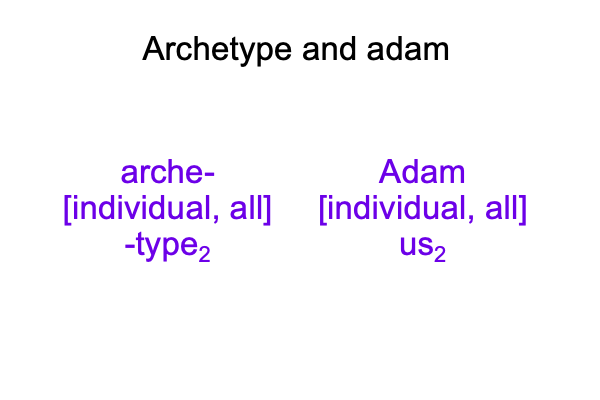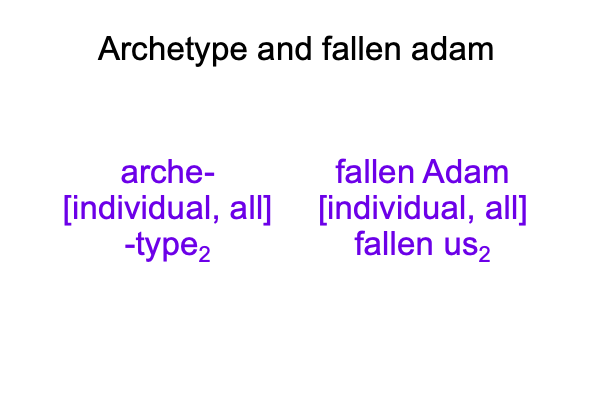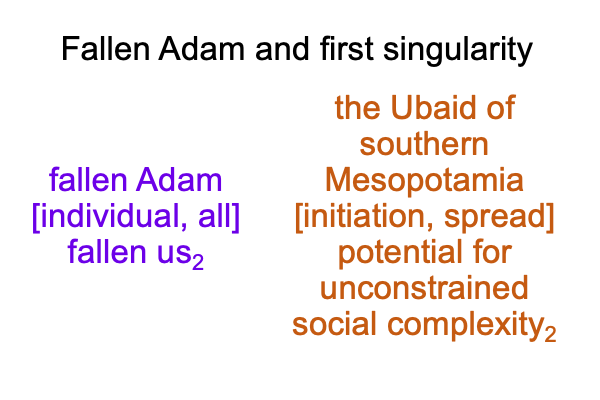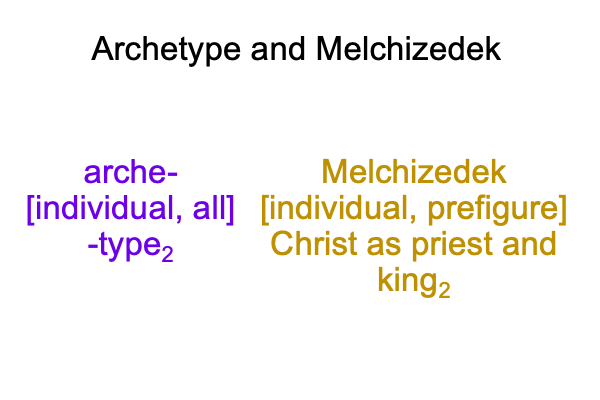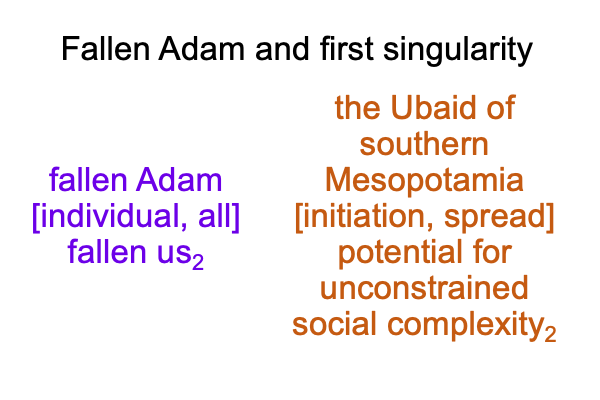Looking at John Walton’s Book (2015) “The Lost World of Adam and Eve” (Part 9 of 22)
0076 Proposition eight?
God’s craftsman-like creation of Adam and Eve are not what they seem to be to the modern materialist.
Plainly speaking, Genesis makes archetypal, not material, claims.
0077 “Archetype” is a wonderful word. It is a composite of arche- (original) and -type (imprint).
0078 If “original” and “imprint” are two real elements, then there must be a contiguity.
Here is the hylomorphe.
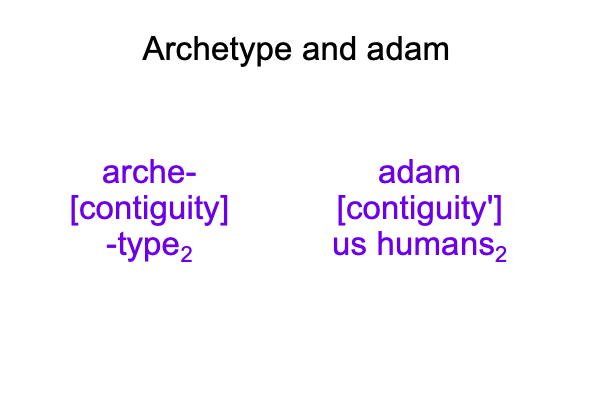
0079 Ah, proposition six starts to make more sense. The scientific ambiguity of the Hebrew term, “adam”, resolves when Adam, the original, is contiguous with adam, the human species. But, adam is not really “the human species (generally)”. Adam is us (in particular). We are human2.
Now, God fashions Adam from the dust of the earth, producing the following hylomorphe.
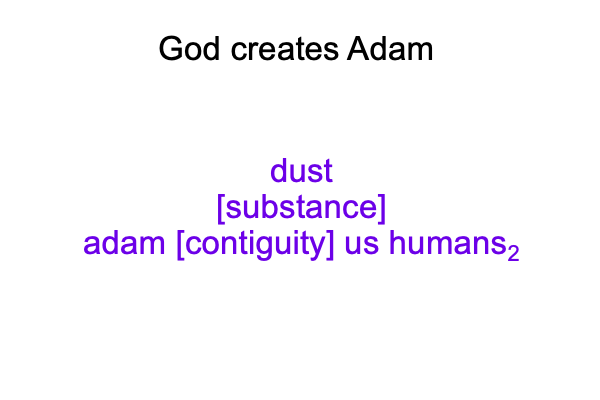
0080 The esse_ce of Adam is dust. The essence of Adam is the preceding hylomorphe, which I call, “Adam”.
0081 This complex hylomorphe is the actuality2 in a category-based nested form.
What is the normal context3?
The key Hebrew word is ysr, which I write as “yeser“.
What is the potential1?
One lesson underpinning God’s yeser3 is found in Genesis 3:19. Adam is dust and to dust he will return. But, the potential is also described by God breathing into Adam’s nostrils, bringing Adam to life.
0082 Consequently, the corresponding nested form contains a wide, bifurcated potential, including both mortality and receiving God’s breath, which sounds, to me, like body and soul.
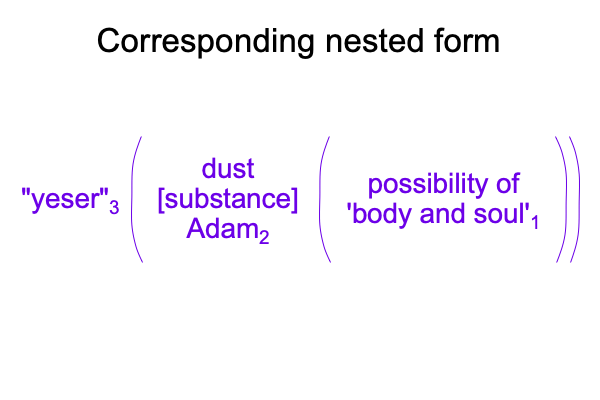
0083 God makes the woman from adam’s side or rib. Even is later called mother of all living.
Here is the hylomorphe.
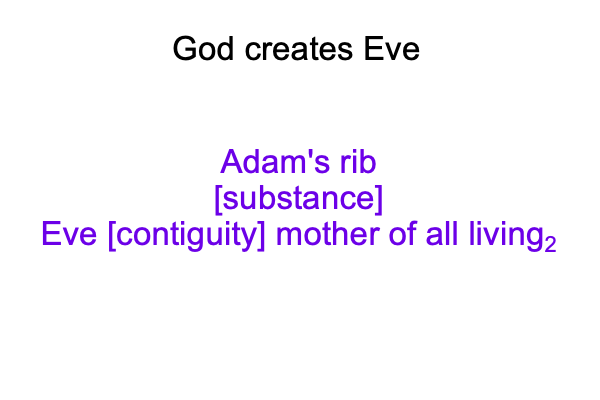
0084 Needless to say, the woman is more complicated than the man.
0085 What does this imply?
Genesis 2.4-5 presents a view of woman that is far more mature, insight-filled and sophisticated than reductionist modern ideological treatments.
0086 Remember, modern feminism ignores human biology. Modern feminism denies human nature. Modern feminism rejects the inherent relationality of the woman as the nexus of the family. Modern feminism relies on spoken words to “name” the realities that they promote. They rely on sovereign power to implement these named realities. This behavior is discussed in How To Define the Word “Religion”.
Perhaps, a category-based treatment of the family is a good place to start the inquiry that will replace every wave of modern feminism. A Primer on the Family, as well as The First and The Second Primers on the Organization Tier offer starting points for further inquiry. The family is one of the few organizations that belong to both the Lebenswelt that we evolved in and our current Lebenswelt.
0087 Thus, I come full circle, back to Walton’s eighth proposition.
On one hand, the fashioning of Adam and Eve is noumenal, not phenomenal. Science does not apply, directly.
On the other hand, the Ubaid of southern Mesopotamia is the setting for the Genesis 2.4-4. The hypothesis of the first singularity is the only proposal, to date, explaining how our current Lebenswelt is not the same as the Lebenswelt that we evolved in. The first singularity starts with the Ubaid. Science applies.
In this regard, Adam and Eve are historical figures.
Their stories give scientists an insiders view of the realization of unconstrained social complexity in southern Mesopotamia.

